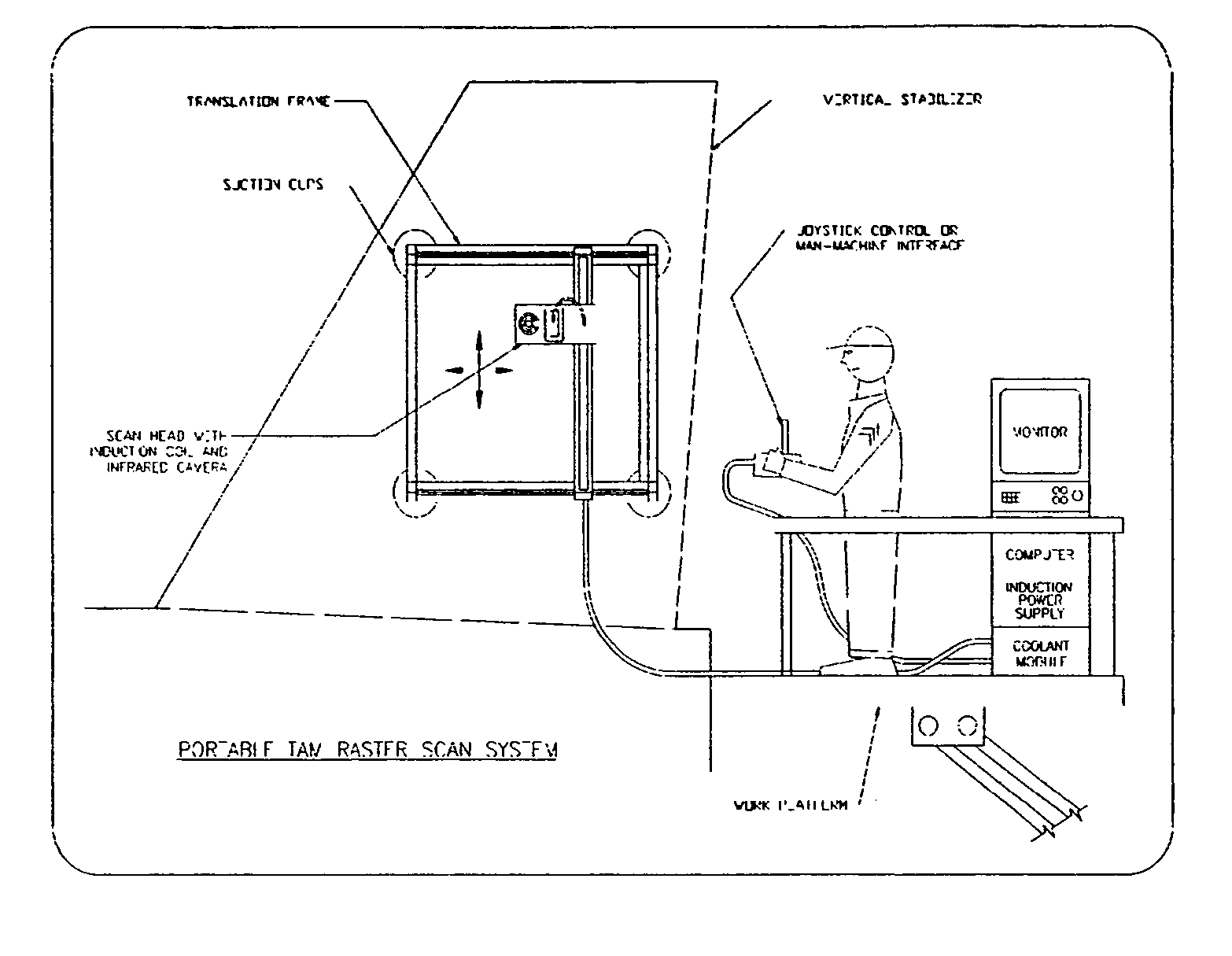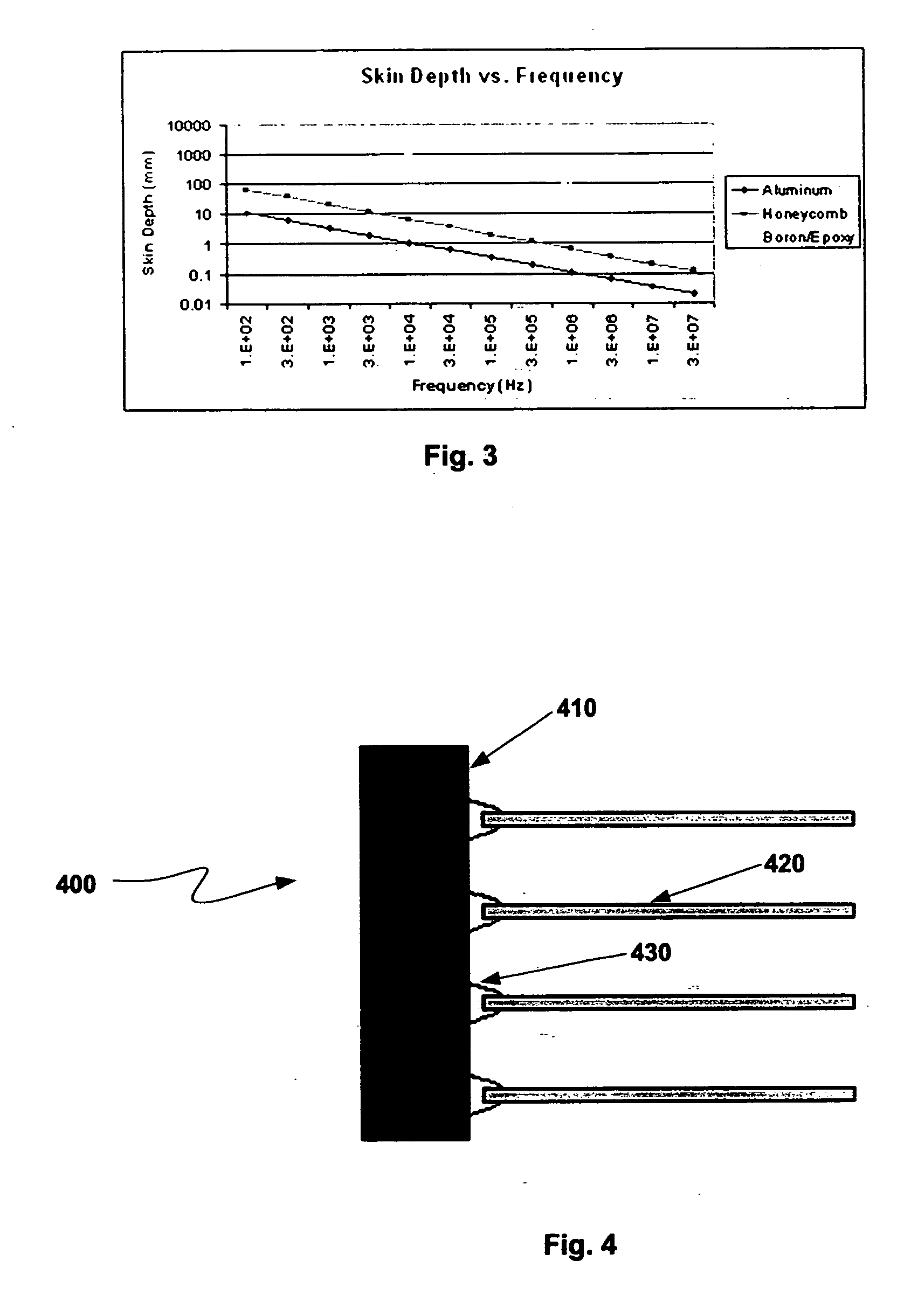Inductively heated transient thermography method and apparatus for the detection of flaws
a transient thermography and inductive heating technology, applied in the direction of material flaw investigation, optical radiation measurement, instruments, etc., can solve the problems of wasting a lot of energy, requiring a significant amount of time, skill and resources to accomplish the task, and consuming time and energy
- Summary
- Abstract
- Description
- Claims
- Application Information
AI Technical Summary
Problems solved by technology
Method used
Image
Examples
Embodiment Construction
[0025] Reference will now be made in detail to the present embodiments of the invention, examples of which are illustrated in the accompanying drawings. Wherever possible, the same reference numbers will be used throughout the drawings to refer to the same or like parts (elements).
[0026] The basis for the innovative NDI technique lies in the simultaneous combination of three elements: induction heating, transient thermography, and thermal diffusion. In the present invention one embodiment employs induction heating to selectively heat an electrically conductive medium in an assembly, for example a honeycomb adjacent to a boron / epoxy skin. In so doing the present invention is able to heat the material structure close to the layer that contains the flaws to be detected. By selecting a frequency that the conductor responds to the user is able to place the heat source where it will have the most value in the transient thermography system. In addition, the time over which the energy is i...
PUM
 Login to View More
Login to View More Abstract
Description
Claims
Application Information
 Login to View More
Login to View More - R&D
- Intellectual Property
- Life Sciences
- Materials
- Tech Scout
- Unparalleled Data Quality
- Higher Quality Content
- 60% Fewer Hallucinations
Browse by: Latest US Patents, China's latest patents, Technical Efficacy Thesaurus, Application Domain, Technology Topic, Popular Technical Reports.
© 2025 PatSnap. All rights reserved.Legal|Privacy policy|Modern Slavery Act Transparency Statement|Sitemap|About US| Contact US: help@patsnap.com



